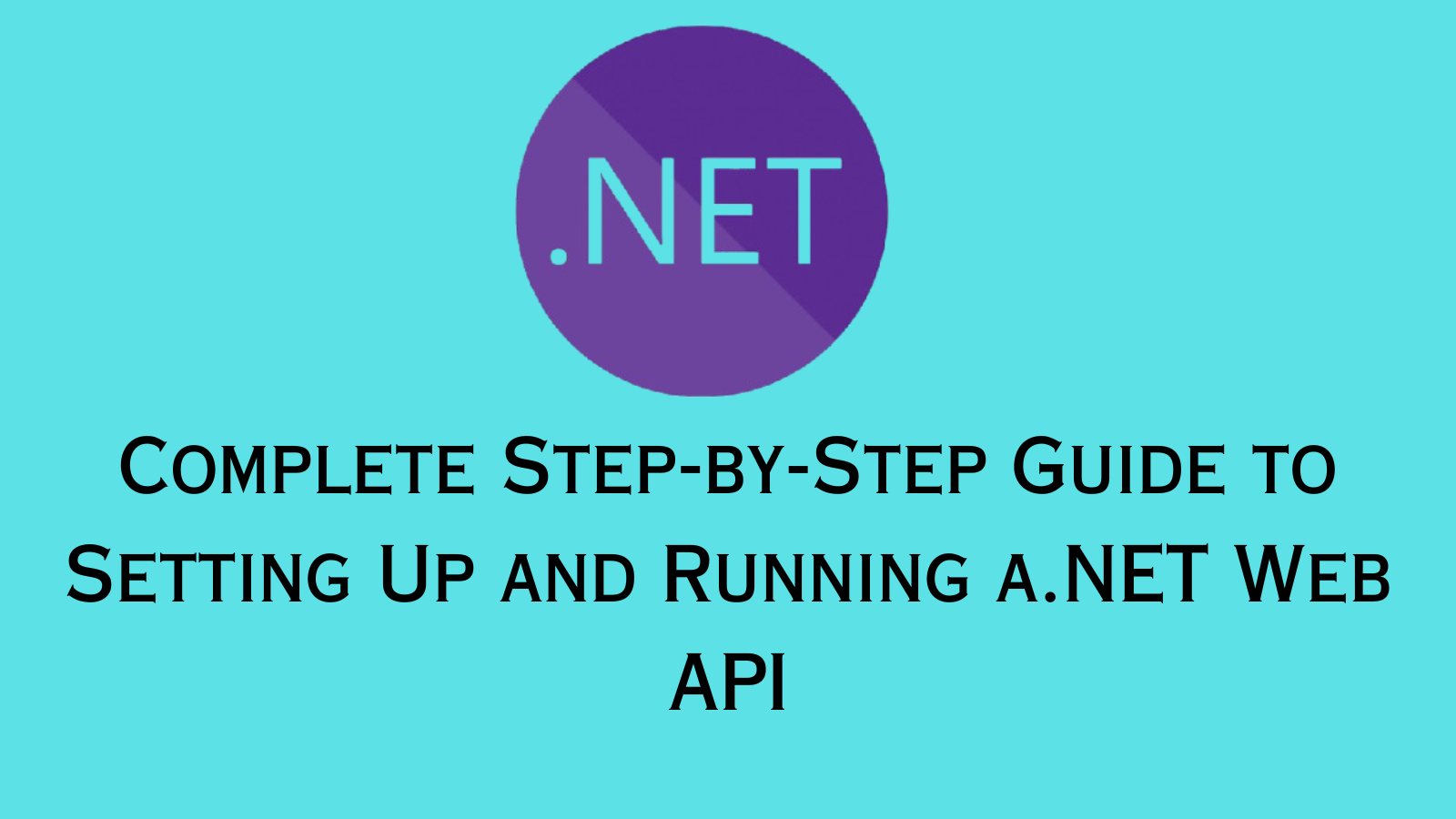Complete Step-by-Step Guide to Setting Up and Running a.NET Web API
 Chandan kumar
Chandan kumar
This guide covers the entire process of installing .NET, setting up a Web API, configuring Visual Studio Code, and running the API.
Step 1: Install .NET SDK
First, download and install the .NET SDK from the official .NET website:
After installation, verify the installation by running:
dotnet --version
This command should return the installed .NET version (e.g., 8.0.100).
Step 2: Install Visual Studio Code
Download Visual Studio Code from: 🔗 VS Code Download
Install VS Code and open it.
Install the following extensions inside VS Code:
C# (by Microsoft) — Provides IntelliSense & debugging.
C# Dev Kit — Improves .NET development in VS Code.
Material Icon Theme — Adds better file icons.
NuGet Package Manager — Helps manage dependencies.
👉 To install extensions, open VS Code and press Ctrl+Shift+X, then search for and install each extension.
Step 3: Create a New .NET Web API Project
Now, let’s create a .NET Web API project step by step.
1. Open Terminal in VS Code
Open VS Code.
Press
Ctrl + ~to open the terminal.
2. Create a New Solution
Run the following command:
dotnet new sln -n MyWebAPI
This creates a solution file (MyWebAPI.sln), which helps manage multiple projects.
3. Create a Web API Project
Now, create a new Web API project inside a folder named API:
dotnet new webapi -o API
This will generate a project with default controller-based API structure.
4. Add API Project to Solution
Navigate back to the solution folder and add the API project:
cd MyWebAPI
dotnet sln add API/
Your solution now manages the API project.
Step 4: Understanding the Folder Structure
After the commands above, your project structure looks like this:
MyWebAPI/
│── MyWebAPI.sln // Solution file
│
└── API/ // Web API project
│── Controllers/ // API Controllers
│ └── WeatherForecastController.cs
│
│── Properties/ // Launch settings for debugging
│
│── appsettings.json // Configuration file
│── Program.cs // Main entry point
│── Startup.cs (if using .NET 6 or earlier)
│── API.csproj // Project file
│── bin/ // Build output (excluded)
│── obj/ // Build cache (excluded)
Step 5: Run the Web API
To start your Web API, run:
dotnet run --project API
OR, for live reload on changes, use:
dotnet watch --project API run
By default, the API runs on:
HTTPS:
https://localhost:5001HTTP:
http://localhost:5000
Test the API
Open a browser and go to:
https://localhost:5001/weatherforecastOr use Postman to make a GET request to
https://localhost:5001/weatherforecast
Step 6: Configure VS Code Settings
Exclude bin/ and obj/ from Search
Open VS Code settings (
Ctrl + ,).Search for “search.exclude”.
Add the following:
"**/obj": true,
"**/bin": true
This prevents unnecessary files from showing in search results.
Step 7: Install and Manage Dependencies
If you need additional packages, use NuGet. For example, to install Entity Framework Core, run:
dotnet add package Microsoft.EntityFrameworkCore
dotnet add package Microsoft.EntityFrameworkCore.SqlServer
dotnet add package Microsoft.EntityFrameworkCore.Tools
To list installed packages:
dotnet list package
Step 8: Debugging in VS Code
Open
APIproject in VS Code.Press
F5to start debugging.VS Code will launch the API and attach the debugger.
Step 9: Publish Your API
To publish the Web API:
dotnet publish --configuration Release --output ./publish
This creates a publish-ready version in the publish folder.
Final Notes
✅ You have successfully:
Installed .NET & VS Code
Created a new Web API project
Configured VS Code & extensions
Ran the API & tested endpoints
Set up debugging and publishing
🎉 Congratulations! Your .NET Web API is ready to go!
Subscribe to my newsletter
Read articles from Chandan kumar directly inside your inbox. Subscribe to the newsletter, and don't miss out.
Written by

Chandan kumar
Chandan kumar
Hello, World! 👋 I'm Chandan Kumar, a passionate and results-driven MEAN stack web developer with a strong background in designing and implementing web applications that deliver exceptional user experiences. I'm dedicated to staying at the forefront of web development trends and technologies to create cutting-edge solutions for my clients. My Expertise: MEAN Stack Development: I specialize in building robust web applications using MongoDB, Express.js, Angular, and Node.js. This full-stack approach allows me to create seamless, end-to-end solutions that meet and exceed client expectations. Front-end Excellence: I have a keen eye for UI/UX design and a deep understanding of front-end technologies such as HTML5, CSS3, and JavaScript. I leverage these skills to craft engaging, responsive, and user-friendly interfaces. Back-end Proficiency: With extensive experience in server-side scripting, API development, and database management, I ensure that the applications I build are not only visually appealing but also highly performant and secure. Problem Solver: I thrive on challenges and enjoy solving complex problems. Whether it's optimizing code for efficiency or troubleshooting issues, I'm committed to finding innovative solutions. My Mission: My mission is to create digital experiences that make a meaningful impact. I'm passionate about collaborating with teams and clients to turn ideas into reality. I believe that technology can empower businesses and individuals alike, and I'm excited to be a part of that journey. Let's Connect: I'm always open to networking and exploring opportunities for collaboration. Whether you're interested in discussing a potential project, sharing insights, or simply connecting with fellow professionals in the tech industry, feel free to reach out. Let's connect and start a conversation! Contact Information: 📩 Email: chandanku845415@gmail.com 📱 LinkedIn: developerchandan 🌐 Portfolio: developerchandan.github.io ✍️ Medium: developerchandan Thank you for visiting my profile, and I look forward to connecting with you!